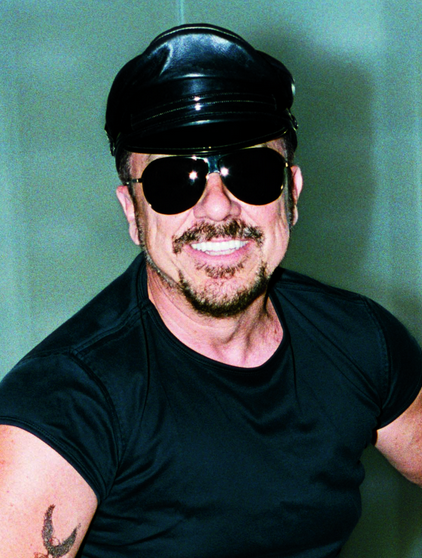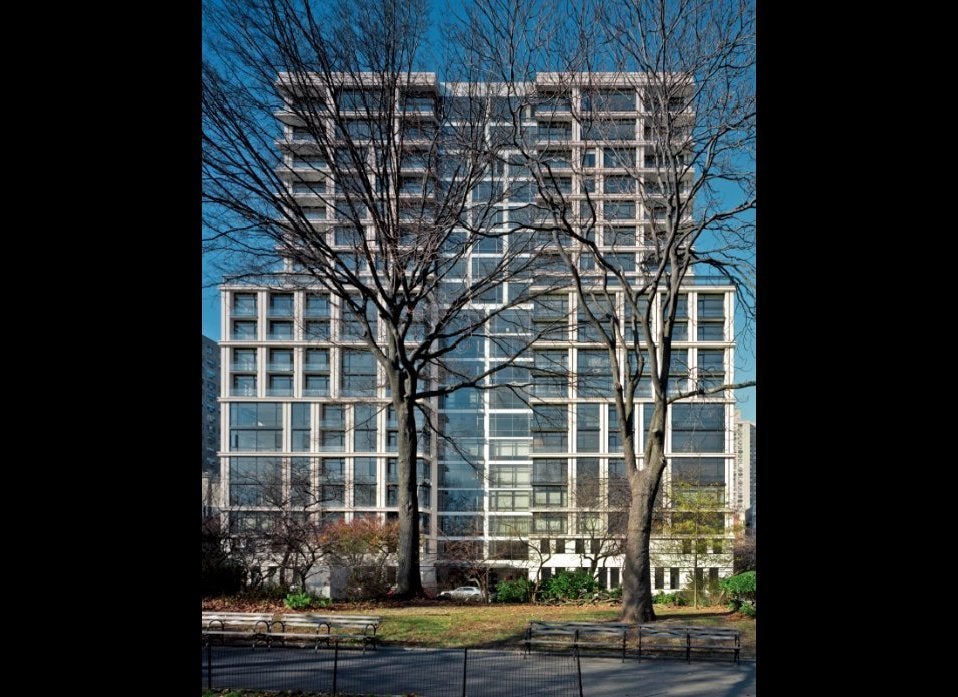Twelve years ago the visionary architect and designer Peter Marino, principal of the New York-based global design firm Peter Marino Architect, traded in his cashmere vest, tie and slacks for something that looked and felt more true to his old biker self. He never went back and now he's famous in fashion circles for his signature tough looks, with his black leather pants, vest and cap, tattoos and skull rings. But he's world-renowned in architecture for his soft, light filled, and luxurious interiors.

Photo credit: Katja Rahlwes
Early on, Marino apprenticed with such masters such as I. M. Pei and George Nelson. He designed the New York apartments of a number of celebrities and creatives, including Andy Warhol ("I got a very big push thanks to Andy at the start of my career," he told Architectural Digest), Yves Saint Laurent, and Gianni and Marella Agnelli.
He's designed several private residences from the snowcapped mountains of Aspen to the sunny shores of Palm Beach, a yacht club in the beautiful island of Sardinia, museums, an opera house and too many luxury boutiques to count. His designs, which have been featured in New York Magazine, Interior Design, House & Garden, Vogue, W magazine, and Elle Décor, introduce surprising new shapes, heights and materials. From Fifth Avenue to Rodeo Drive they can be seen in all the major fashion capitals of Europe and the US, as well as in Asia and the Middle East.
I was recently in the Fendi store he created in Rome, a renovated 19th century palazzo. I was so awestruck by the interior -- the dramatic 1960's dangling Murano glass chandelier, the smoky walls and marble floors--that I hardly even noticed the clothes. The radiant Louis Vuitton stores he designed in Singapore and Hong Kong, the luxurious Chanel boutique in Paris, his Beverly Hills and New York Barney's and his New York Fendi and Dior are more like galleries than boutiques; they have received innumerable awards for excellence in design and architecture.
An interesting intersection of fashion, business, and architecture, my interview with Marino delves into creativity, collaboration and finding peace on an airplane.
Q. What were the best and the worst jobs you ever had? What lessons did you take away from them?
Best: Chanel Ginza Tower. Construction in Japan is the most organized and precise in the world, and the client invested the proper time and budget to develop the new glass skin. To be able to have truly created something NEW (glass TV on the outside, clear vision for office workers from the inside) was a unique opportunity.
Worst: Not many come to mind. I either quit early on if I feel I've incorrectly hooked up with a client or if he/she isn't serious about bringing the project to fruition.
One thing I've learned: NEVER do promotional work. It never leads to anything but a total lack of respect for your time and your work.
Q. When did you land your first big project and what was it?
The Whittle Communications Headquarters in Knoxville, Tennessee. Two entire city blocks that I combined into one, with a huge courtyard garden. It is now a federal courthouse.
Q. How do you handle collaborators or colleagues who damp down your ideas because they think they're too ambitious? What was your most courageous idea?
I've never experienced that. Our office is very open and free.
My most courageous idea was to build Barneys New York with natural light on all floors, all sides. No department store had ever done that before.
Q. Do you do it all yourself or do you delegate? How do you trust others to carry out your vision?
I'm a design-it-all-myselfer. I delegate all phases of construction administration and office management. I have an excellent staff of senior architects and designers, most of whom have been with me for at least 12-15 years, to help carry out my vision. Having said that, my work week averages 60-80 hours.
Q. How do you know when it's time to walk away from a project?
When either the client is totally unreceptive to my ideas, or he/she stops paying!
Q. Where do you get your creative inspiration?
Paintings, nature (landscapes), music (opera).
Q. Do you think people are more creative when they're younger?
No. I think they just think they are because everything seems new and original when you're younger, due to a lack of knowledge and experience.
Q. Who is your dream collaborator and why?
The Aga Khan. Well educated in architecture, his humanistic approach is unparalleled.
Q. You have a very dynamic look and are a brand unto yourself. How do your clients in less open countries react? What do you think of organizations that impose strict dress guidelines on their staff?
As I'm a creative person, people extend me a lot of slack. Once I was in an airport in Saudi Arabia and I realized I was the only person in black surrounded by hundreds of men in white. A little surreal.
Regarding dress guidelines, it depends on the profession that you are in.
Q. What advice would you give to young architects going into the workforce? How hard is it to break through and establish a name for yourself?
Young architects should gather as much construction experience as possible and work for two or three different architects in their first six years out of school. It is VERY DIFFICULT to break through. The field is crowded with talent and very connected practitioners.
Q. With so many global clients, it seems that your office is the airplane. How do you juggle so many clients and projects at the same time while balancing your personal life?
When I'm in New York, I rarely go out, in order to spend time with family. Also, my personal life is fairly uncomplicated. The good thing about the airplane life is there is lots of uninterrupted time; to read, to think, to draw.
